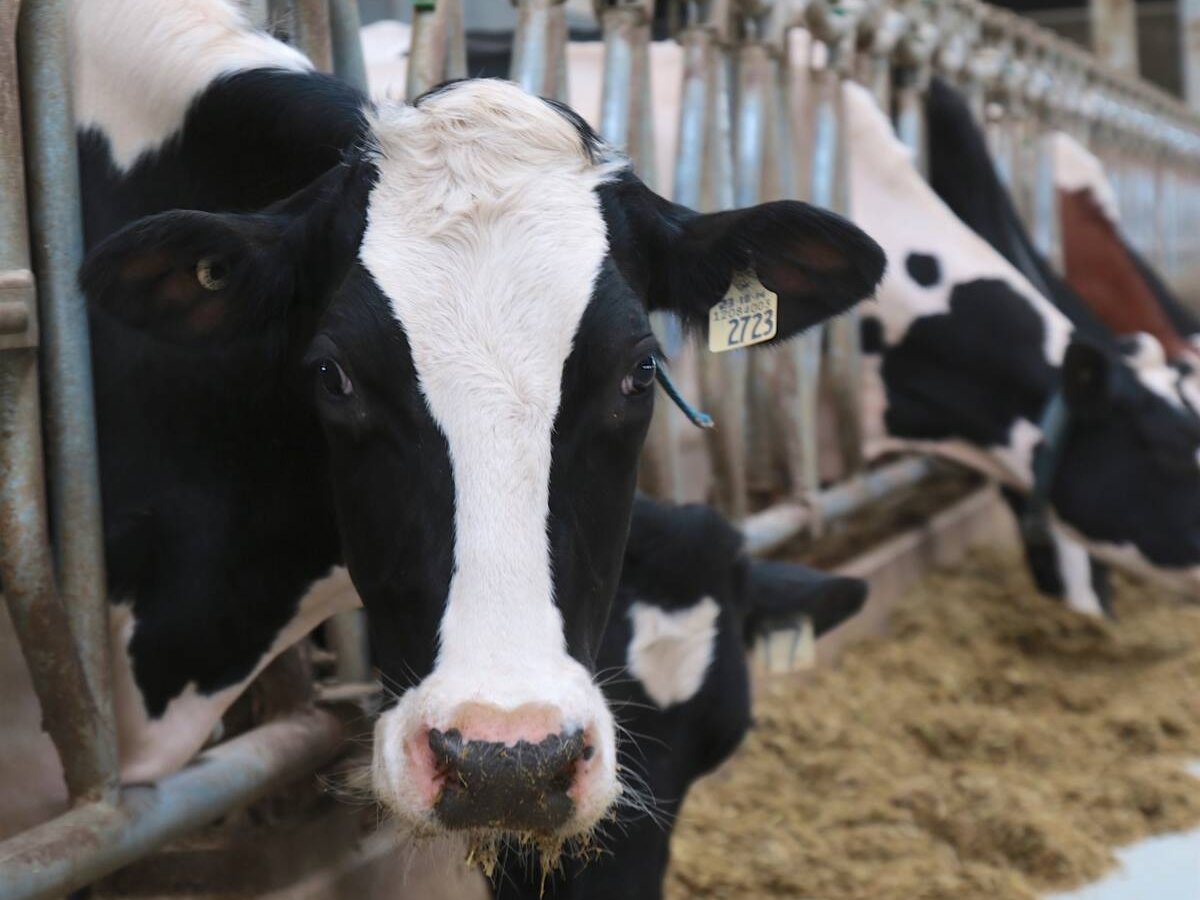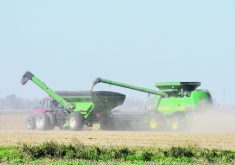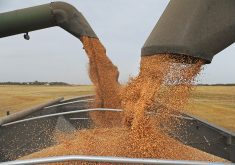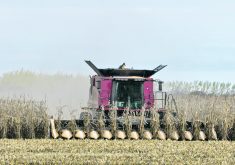Good hay conditions
Alberta
South
Seeding is complete across most of the south. Winter wheat is well along and most other crops have emerged. Some spraying is underway for weed control.
Pea leaf weevil is also reported to be a problem in some pulse crops. Moisture conditions are good and little irrigation has been necessary so far.
Hay and pastures are also in good condition. The last two weeks of May and first two weeks of June are typically the wettest four-week period in this region.
Read Also

The Organization for Economic Co-operation and Development lauds Canada’s low farm subsidies, criticizes supply management
The Organization for Economic Co-operation and Development lauded Canada’s low farm subsidies, criticized supply management in its global survey of farm support programs.
Central
Warm, dry weather two weeks ago allowed good seeding progress. Seeding is now approaching 90 percent complete.
All wheat has been seeded and about 90 percent of the canola. Barley and oats seeding is 60 to 70 percent complete.
There have been few rain delays and soil moisture conditions are good. Hay and pastures are also in good condition.
Northeast and Northwest
The region is dry in spots and wind caused some concern about canola shearing.
Overall, moisture conditions are good. Seeding is mostly complete, with only barley and some feed crops remaining. Pastures are in good condition.
Peace
Seeding is 75 to 80 percent complete. Soil moisture is good following recent showers that moved from the Peace region southeast through Lloydminister, with amounts ranging from 40 to 60 millimetres.
Flea beetles have been reported in some canola crops. Cutworms have also been seen isolated pockets.
Saskatchewan
A year ago, only 54 percent of the crop had been seeded at this time because of heavy rain. The eastern and southern regions were particularly affected. This year, about 74 percent of the province’s crops are in the ground, four points above the five-year average.
South
About three quarters of the crop is seeded, but seeding was mostly shut down due to heavy precipitation early this week.
The southeastern region was hit hardest with the largest amount of rainfall. The Tantallon area received 98 milimetres of precipitation last week, bringing the total received since April 1 to 242 mm. In the southwest, the Eyebrow area received the greatest amount of precipitation since April 1 with 237 mm.
Across the south, 76 percent of emerging crops have flood damage.
Frost and wind damage affected several crops and some canola fields had to be reseeded.
An estimated 11 percent of acres in the south overall remain unseeded due to excess moisture, compared to only five percent in the southwest.
Warm and dry conditions are needed for weed control and seeding.
Central
Seeding in the east-central area lags furthest behind in the province with 59 percent of crop in the ground. Rain delayed seeding in the east-central and west-central regions. In the east-central region, the Goodeve area received the greatest amount of rainfall since April 1 at 242mm. In the west-central, Hanley has had 204 mm. Across the central region, about 25 percent of emerged crops have flood damage and about 10 percent have frost damage. Cool night temperatures have slowed crop emergence.
North
The northern regions lead the province for the amount of completed seeding compared to the five-year average. The northwest region has 86 percent of crop seeded with soil moisture near perfect. Both areas saw significant increases in seeding progress this week. Only five percent of acres remain unseeded due to excess moisture.
Porcupine Plain led the eastern region for precipitation, recording 84 mm last week, bringing the total received since April 1 to 195 mm.
In the west-central area, the Hafford area recorded the highest amount at 67 mm, bringing the total rainfall received since April 1 to 162 mm. Less than 10 percent of emerging crop has flood damage. Frost has affected about seven percent of crops. Some canola crops may need to be reseeded due to frost and flea beetle damage.
Manitoba
Southwest
Showers and storms in late May and early June dumped 10 to 70 mm of rain on the region. Seeding is nearly complete, with the exception of a few areas with persistent wet conditions. Winter wheat is heading on several fields. Most winter wheat crops are at the flag leaf stage.
Flea beetle damage has been reported on canola crops. Pastures have perked up following the recent rain. Warmer weather is needed for pasture and crop development.
Central
Rains of 50 to 75 mm caused pools of water to form on fields in the region. Heat is needed to spur crop development, but most crops are progressing nicely. Canola development ranges from emerging to the four leaf stage to cabbaging over. Soybeans have reached the first trifoliate stage.
Winter wheat fields have thick, lush stands. Tan spot and powdery mildew has been reported within the canopy. Leafhoppers are present in many winter wheat fields. Producers have detected economic levels of cutworms in corn and sunflower fields.
Northwest
Soil moisture ranges from adequate to excessive. Intermittent rain and storms have caused ponding in certain fields. Higher amounts of moisture have been reported around Swan River.
Herbicide treatments of spring wheat are underway. There are reports of pesticide application to control flea beetles in canola. Hay crop and pasture growth has been slow because of wet conditions.
Eastern
Seeding is basically complete because the last of the soybeans are now in the ground. Soil moisture is rated as surplus in the northern half of the region and adequate to dry in the southern half. Crop development is rated as good. Corn ranges from the V1 to V5 stage. Soybean crops have emerged. Hay and pasture land is fair to poor in the southern portions of the region. Warmer weather is needed for fields to take advantage of recent rain.
Interlake
Frost hit the Arborg and Moosehorn areas in late May. Damage is still being assessed. Winter wheat is in the flag leaf stage. More advanced crops are heading.
Spring wheat is in the four leaf stage. Producers continue to monitor flea beetle damage to canola.
Dugouts in the region had lower than normal water levels, but rain in late May and early June boosted water supplies.














